Pollinators, such as bees, beetles, butterflies, and other insects, have a role in the production of one out of every three foods we eat. The ecological service they provide is necessary for the reproduction of nearly 70 percent of the world’s flowering plants, including more than two-thirds of the world’s crop species. In North America, most of the credit for pollination goes to the introduced European honeybee (Apis mellifera), but in reality a variety of insects and animals pollinate crops such as nuts, fruits, and vegetables. For example, there are more than 450 species of native bees in British Columbia.
Pollination is one of the benefits we humans receive from intact natural ecosystems. Often called “ecosystem services” by conservation biologists, these are the resources and processes, such as clean air and water, that are provided free of charge when we conserve natural ecosystems. The economic value of native pollinators is estimated at $3 billion per year in the U.S.
Much of our current day agriculture relies on one or two pollinating insects. Pollination is much more robust to impacts if there are many different species providing this service. In North America, honey bee populations are currently being decimated because of a number of factors, including parasitic mites and pesticides. Also concerning is a recent study by the Zoological Society of London that shows that the percentage of invertebrates at risk of extinction worldwide is similar to birds and mammals. Overall, one in five invertebrate species are thought to be threatened with extinction. Pollinators are at risk from habitat loss, pesticide use, and introduced diseases.
There are many things we can do to conserve native pollinators. In a newly published book by the Xerces Society, Attracting Native Pollinators: Protecting North America’s Bees and Butterflies, several strategies to help pollinators are outlined. These include:
– Recognizing and protecting natural pollinator habitats;
– Reducing negative impacts from practices like grazing and mowing;
– Reducing or eliminating use of pesticides;
– Planting areas for pollinators to forage in developed areas; and
– Providing sites for nesting and overwintering.
Actions to conserve pollinators can be undertaken in urban gardens, farms, natural areas, parks, and even on green roofs.
At A Rocha, we are thinking about ways we can incorporate pollinator research and conservation into our Community Shared Agriculture projects and Community Garden Network. It is our hope that we can encourage productive, healthy farms and gardens by also encouraging care of the natural ecosystems around them.









Add a Comment